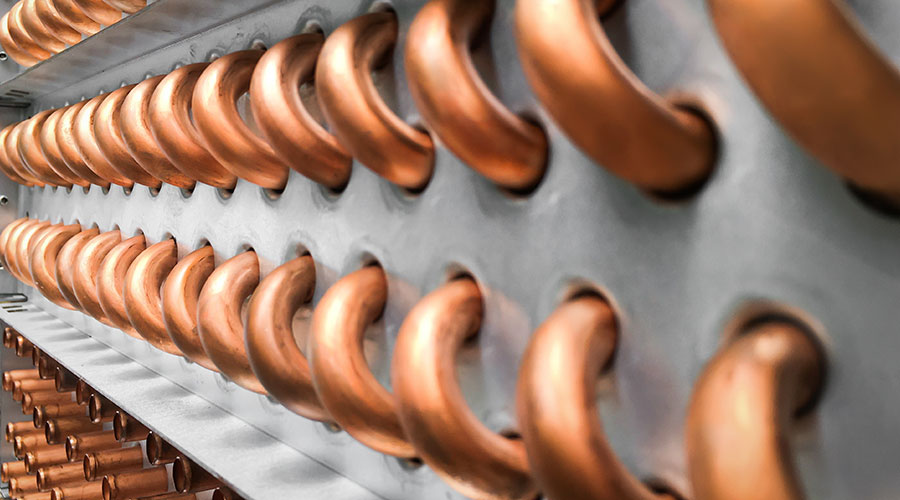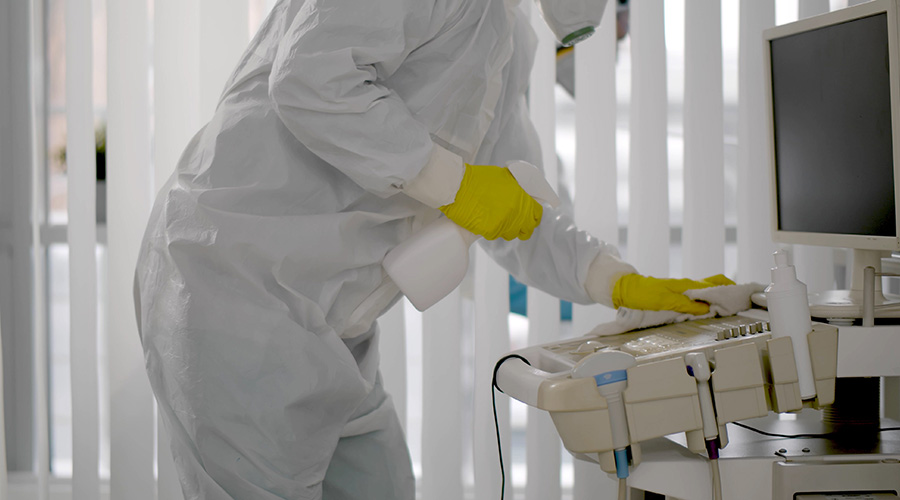HVAC hygiene became a hot topic during the COVID-19 pandemic due to the belief it helped facilitate the airborne spread of the virus. In the years since, however, focus on this area appears to have declined.
Healthcare Facilities Today spoke with Jeff Atkinson, subject matter expert for The Budd Group, to explore why the focus on HVAC cleaning and maintenance has shifted and what that could mean for healthcare environments.
HFT: During the pandemic, coil cleaning became a heightened priority for healthcare facilities. Why do you think that urgency has diminished in the years since?
Jeff Atkinson: The CDC came out and identified the chain of transmission mainly being airborne. That resulted in some recommendations and some ideas related to the dilution of our indoor air that was being generated within the space itself. So, increasing room air changes into a space, increasing the percentage of outside air and then also increasing the filter efficiencies that the CDC recommended to maximize that which the HVAC system would allow.
All of these items together push the boundaries of our existing HVAC units to the limits of the design capacities. So, keeping the HVAC systems clean and efficient became priority No. 1 at least with our healthcare clients to maintain room air changes. With coils and other components of the HVAC system, keeping them unobstructed and clean became a top priority to make sure we were still able to meet the static set point requirements.
Then since vaccines and isolation protective rooms were becoming available, people thought they could lower their guard on indoor air quality. That’s not necessarily the case. Another issue that we’ve had is having qualified staffing in tight labor markets and having enough staff to perform preventative maintenance. Because of that, we ended up getting back into the habit of reactive maintenance. So, since the pandemic has been on a lower profile, I believe our response to the mechanical hygiene and requirements for maintaining room air changes has lessened in perceived importance.
HFT: Do you think coil cleaning will regain more attention as part of broader indoor air quality in healthcare, or is it still overlooked?
Atkinson: It’s overlooked now, but it most definitely will be prioritized more and more as we move away from this “out of sight, out of mind” mentality. Especially in healthcare, the hygiene of this equipment is like the last frontier of healthcare. Every other area of healthcare is highly monitored and verified by using data.
Related Content: Outfitting HVAC Systems to Kill Airborne Pathogens
However, in air quality and especially in coil cleaning, how the unit is maintained and sanitized will be more important when and if the next pandemic takes place.
HFT: How does neglecting coil maintenance affect not just air quality, but also the energy efficiency overall HVAC system performance in healthcare settings?
Atkinson: It’s obvious that a neglected coil will reduce air flow and possibly could affect our ability to provide the room air changes and pressurization needed. It also reduces the dilution effect of the clean air being supplied to an environment. Allowing or decreasing the amount of outside air and the clear return air dilution increases the chances of less clean air in those spaces.
The less attention paid to the hygiene inside that dark, damp environment inside of an air handler, the more likelihood of biological growth inside of it. This is especially true in the areas where condensation is prolific. Then downstream from that, not only is bacteria produced within that system, but you can also have mold and fungal growth which can produce irritants.
However, that also requires an obstructed coil or even a thin film of buildup over the surface of the substrate of that coil or coil fin. That has a big impact on energy use and the transfer efficiency of that cooling or heating to the air that’s going through the coil. That requires more of the drive of the fan to maintain that system static set point, and therefore you have a big increase in the amount of energy required to maintain that.
In addition to that, it also provides more pressure and wear and tear on the motors and compressors which results in more frequent failures and the need for replacements. All those factors combined are the results of neglecting the hygiene inside the HVAC system.
Jeff Wardon, Jr., is the assistant editor of the facilities market.

 Why Identity Governance Is Becoming a Facilities Management Issue
Why Identity Governance Is Becoming a Facilities Management Issue Habitat Health Opens South Los Angeles PACE Center
Habitat Health Opens South Los Angeles PACE Center Denton County MHMR Center Suffers a Data Breach
Denton County MHMR Center Suffers a Data Breach What Every EVS Leader Needs To Know
What Every EVS Leader Needs To Know Blackbird Health Opens New Clinic in New Jersey
Blackbird Health Opens New Clinic in New Jersey